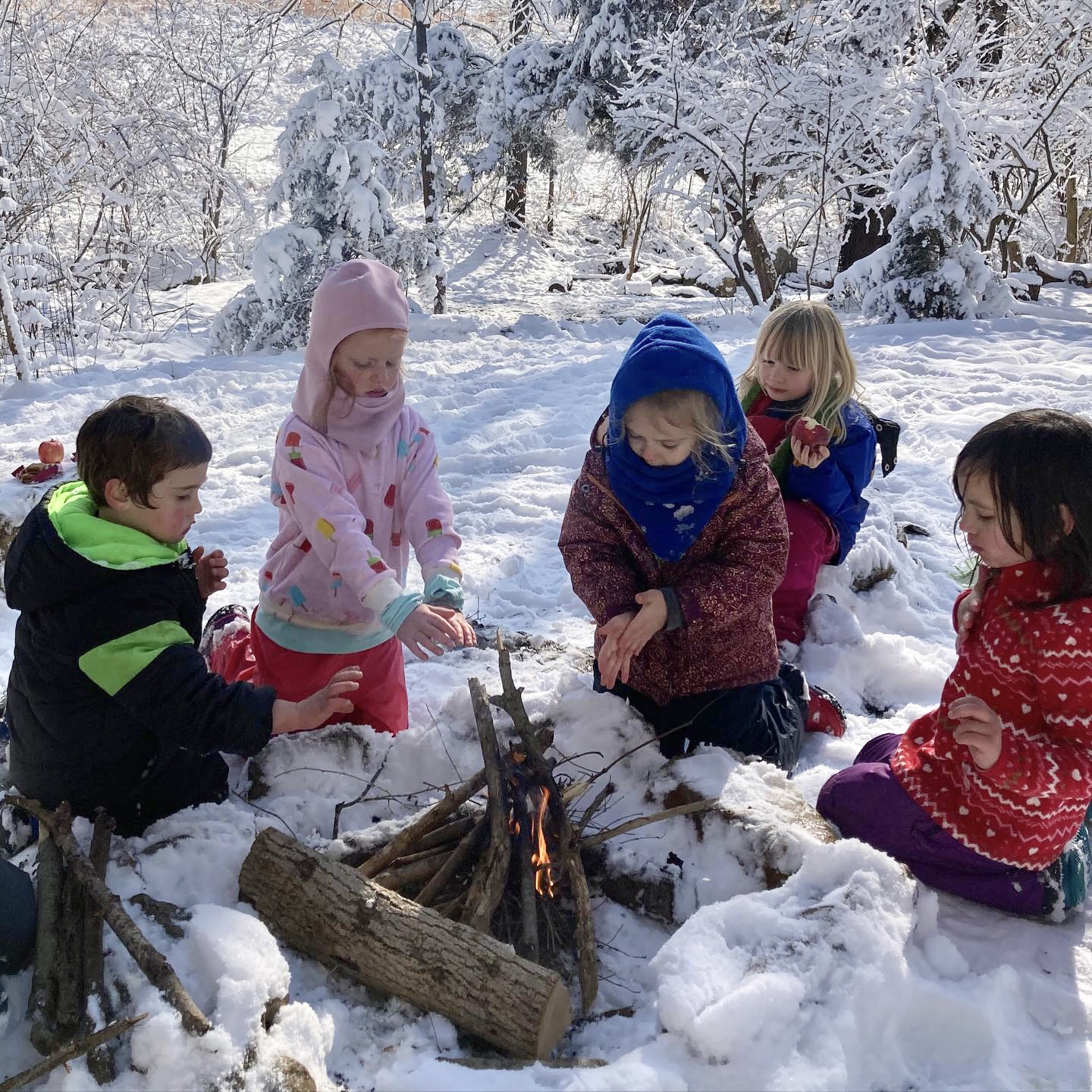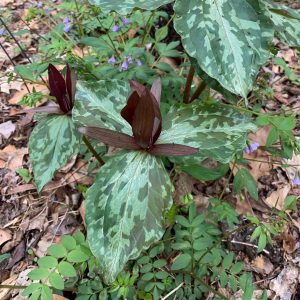Thriving in the Winter at Thrive Forest School
by Christy Rybka
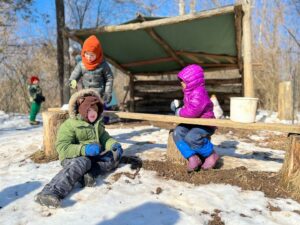
At Thrive Forest School at Creasey Mahan Nature Preserve, we are learning and having fun outside in all weather, in all seasons, all year. Rather than being cooped up when the weather gets cold, we embrace the snow, ice, and freezing temperatures by building snow forts, sliding across frozen puddles, and sledding down snowy hills. However, staying outside in below freezing temperatures does not come without its challenges.
One of the most common questions that educators at Thrive Forest School hear from prospective families is, “Do you really stay outside all winter?” The answer is, yes, we do! Read on to learn how we do it.
Proper Clothing
Here at Thrive Forest School, we say that there is no such thing as bad weather, only bad clothing choices! When it comes to enjoying wintery weather, proper clothing is a requirement. Layers are mighty important: wool-based layers, fleece mid-layers, and water-resistant outer layers are essential, along with hats, mittens, and insulated boots. These clothing items make a fun day of play possible in freezing temperatures.

Unlike cotton, which absorbs moisture and releases heat from the body, non-absorbent wool-based layers trap heat in the body. Fleece mid-layers provide an additional layer of insulation, and finally, water-resistant outer layers provide protection from contact with cold, wet snow, and ice.
In addition to packing warm, weather appropriate clothing, students may also pack warm tea and handwarmers in their backpacks, for easy access, when needed.
With the proper gear, children can stay warm, dry, and happy in almost any chilly condition.
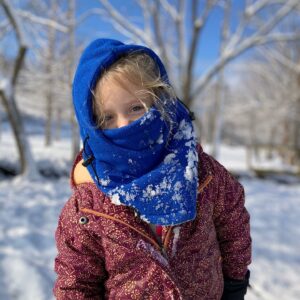 Unlike cotton, which absorbs moisture and releases heat from the body, nonabsorbent wool base layers trap heat in the body. Fleece mid layers provide an additional layer of insulation, and finally, water resistant outer layers provide protection from contact with cold, wet snow and ice. In addition to packing warm, weather appropriate clothing, students may also pack warm tea and handwarmers in their backpacks, which they may use as needed.
Unlike cotton, which absorbs moisture and releases heat from the body, nonabsorbent wool base layers trap heat in the body. Fleece mid layers provide an additional layer of insulation, and finally, water resistant outer layers provide protection from contact with cold, wet snow and ice. In addition to packing warm, weather appropriate clothing, students may also pack warm tea and handwarmers in their backpacks, which they may use as needed.
With the proper gear, children can stay warm, dry, and happy in almost any weather conditions!
Movement
 At Thrive Forest School, our students do not learn by sitting in desks, but by running, climbing, playing with their friends, and moving up and down around the outdoor classroom. Children who are actively playing in the cold are not only more likely to stay warm as their bodies generate heat internally but are less likely to complain about the weather because they are busy having fun!
At Thrive Forest School, our students do not learn by sitting in desks, but by running, climbing, playing with their friends, and moving up and down around the outdoor classroom. Children who are actively playing in the cold are not only more likely to stay warm as their bodies generate heat internally but are less likely to complain about the weather because they are busy having fun!
Bonfires
During the cold winter months, students at Thrive Forest School enjoy the warmth and comfort of a bonfire, which is monitored by educators in the classroom and kept burning throughout the school day. Students may go to and from the bonfire as needed with the permission of the educator who is monitoring the fire. When children are cold, they may come to the fire to warm their hands, then leave when they are ready to go play.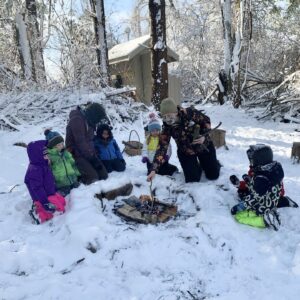
Although fire in the classroom can present hazards, educators and students are well trained to enforce and practice fire safety rules, which all of the students learn before the first fires of the year are safely enjoyed.
Thrive Forest School is not boot camp, and so in extreme temperatures or in the case of thunderstorms, classes seek shelter inside the natural history museum to get warm (or to cool down) and stay safe. But as soon as it is possible to go outside again, the kids are the first to zoom outdoors.
Although taking school outside in the winter does come with its challenges, learning in all weather, in all seasons, all year produces character traits such as resilience, perseverance, creativity, focus, and confidence, which cannot be learned the same way in an indoor classroom. These character traits, when learned at a young age, benefit children not only through primary school, but through adulthood as they face new and different challenges later in life.
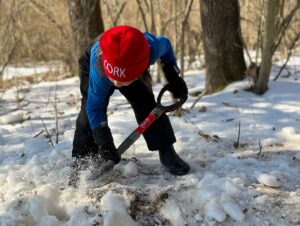
Finally, learning outside creates memories that students remember through childhood and into adulthood. Building forts, making snow angels, sledding, and warming hands and hearts around the fire teaches children they are able to persevere through challenging situations. Thrive students develop a love for learning, for nature, and for fellow students through their shared experiences and joy in being outside in all weather, all year round.
Thrive on!

